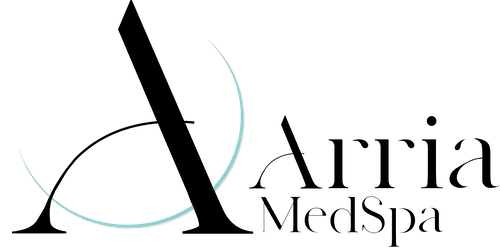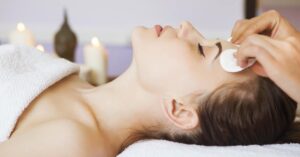An Exploration Into The Different Skin Resurfacing Methods
Skin resurfacing has become increasingly popular as people seek to rejuvenate their appearance and address various skin concerns. From thin fine lines and wrinkles to acne scars and uneven skin tone, numerous methods are available to help individuals achieve smoother, more youthful-looking skin. This comprehensive guide will explore different skin resurfacing techniques, their benefits, and what to expect from each procedure.
Chemical Peels
Chemical peels are a widely used skin resurfacing method involving applying a chemical solution to the skin to remove the top layers. This process stimulates cell turnover in addition to collagen production, resulting in smoother, more evenly toned skin.
Types of chemical peels:
- Superficial peels: These use mild acids, such as alpha-hydroxy acids (AHAs), to delicately exfoliate the outermost layer of skin.
- Medium peels: Typically using trichloroacetic acid (TCA), these peels penetrate deeper into skin addressing more significant concerns.
- Deep peels: The most intense option is deep peels, which use phenol to penetrate the lower dermal layers, providing dramatic results for severe skin damage.
Chemical peels improve skin texture, reduce fine lines and wrinkles, and even out skin tone. Recovery time varies depending on the type of peel, ranging from a few days for superficial peels to several weeks for deep peels.
Microdermabrasion
Microdermabrasion is a non-invasive treatment that uses tiny crystals or a diamond-tipped wand to gently exfoliate removing the outer layer of dead skin cells. This mechanical exfoliation stimulates collagen production and cell turnover.
There are two main types of microdermabrasion:
- Crystal microdermabrasion: Fine crystals are used to buff away dead skin cells.
- Diamond-tip microdermabrasion: Employs a wand with a diamond-tipped head to exfoliate the skin.
Microdermabrasion is effective for improving skin texture, reducing thin fine lines, and minimizing the appearance of enlarged pores. It’s a gentle procedure with minimal downtime, making it suitable for those with busy lifestyles.
Laser Skin Resurfacing
Laser skin resurfacing uses focused light energy to remove skin cells that are damaged and stimulate collagen production.
There are two primary categories of laser treatments:
- Ablative lasers: These remove the outer layer of skin and heat the underlying layers to stimulate collagen production. Examples include CO2 and Erbium YAG lasers.
- Non-ablative lasers: These work by heating the underlying skin tissue without damaging the surface, promoting collagen production and skin tightening. Examples include Nd: YAG and fractional lasers.
Laser treatments can address a wide range of skin concerns, including wrinkles, age spots, acne scars, and uneven skin tone. The recovery time and results vary depending on the type of laser used and the intensity of the treatment.
Fractional Laser Therapy
Fractional laser therapy is a more advanced form of laser resurfacing that treats only a fraction of the skin’s surface at a time. This approach allows for faster healing and reduced downtime compared to traditional ablative laser treatments.
There are two types of fractional lasers:
- Ablative fractional lasers: Create microscopic wounds in the skin to stimulate healing and collagen production.
- Non-ablative fractional lasers: Heat the underlying skin tissue without damaging the surface.
Fractional laser therapy effectively treats fine lines, wrinkles, and acne scars and improves overall skin texture and tone. The treatment typically requires less downtime than full ablative laser resurfacing.
Radiofrequency Microneedling
Radiofrequency (RF) microneedling combines two skin rejuvenation techniques: microneedling and radiofrequency energy. This procedure uses tiny needles to create micro-injuries in the skin while simultaneously delivering RF energy to the deeper layers.
The benefits of RF micro needling include:
- Stimulation of collagen and elastin production
- Improvement in skin texture and tone
- Reduction of fine lines and wrinkles
- Minimization of acne scars and enlarged pores
RF microneedling is suitable for various skin types and typically requires minimal downtime. Most patients experience only mild redness and swelling for a few days after the treatment.
Dermaplaning

Dermaplaning is a manual exfoliation technique that uses a sterile surgical scalpel to gently scrape off the top layer of dead skin cells and fine facial hair (vellus hair or “peach fuzz”). This procedure leaves the skin smooth and radiant.
Benefits of dermaplaning include:
- Immediate improvement in skin texture
- Enhanced product absorption
- Smoother makeup application
- Reduction of fine lines and minor scarring
Dermaplaning is a quick procedure with no downtime, making it an excellent option for those seeking a quick skin refresher.
Ultrasound Therapy
Ultrasound therapy, such as Ultherapy, uses focused ultrasound energy to stimulate collagen production in the deep layers of the skin. This non-invasive treatment can help tighten and lift the skin on the face, neck, and décolletage.
The benefits of ultrasound therapy include:
- Non-surgical skin tightening
- Improvement in skin texture and tone
- Reduction of fine lines and wrinkles
- Natural-looking results that develop over time
Ultrasound therapy typically requires no downtime and can be an excellent option for those looking for a non-invasive alternative to surgical facelifts.
Plasma Skin Resurfacing
Plasma skin resurfacing, also known as fibroblast therapy, is a relatively new skin tightening treatment that uses plasma energy to create tiny wounds in the skin. This process stimulates collagen production and skin tightening.
The benefits of plasma skin resurfacing include:
- Improvement in skin laxity
- Reduction of fine lines and wrinkles
- Treatment of acne scars and stretch marks
- Long-lasting results
Plasma skin resurfacing typically requires a few days of downtime, with visible results developing over several weeks.
Choosing the Right Skin Resurfacing Method
When selecting a skin resurfacing treatment, consider the following factors:
- Your specific skin concerns and goals
- Your skin type and sensitivity
- The amount of downtime you can accommodate
- Your budget and the number of treatments required
- Potential risks and side effects
It’s essential to consult with a highly qualified skincare professional who can assess your skin and recommend the best and most appropriate treatment plan for your individual needs.
Contact The Arria MedSpa for Services
If you’re interested in exploring skin resurfacing treatments, The Arria MedSpa offers a range of cutting-edge treatments to help you achieve your skincare goals. Our healthcare professionals can provide personalized recommendations and expert care to help you achieve smoother, more youthful-looking skin.
Contact The Arria MedSpa today to schedule a consultation and learn more about our skin resurfacing services.
For More Invasive Facial Procedures
If you are looking for more invasive facial procedures, our partner, The Plastic Surgery Group in Montclair, NJ, offers a comprehensive range of surgical options. Their board-certified plastic surgeons specialize in advanced facial rejuvenation techniques to address more significant concerns and achieve dramatic results.
Contact The Plastic Surgery Group in Montclair, NJ, to explore their range of surgical facial procedures and find the best solution for your needs.





